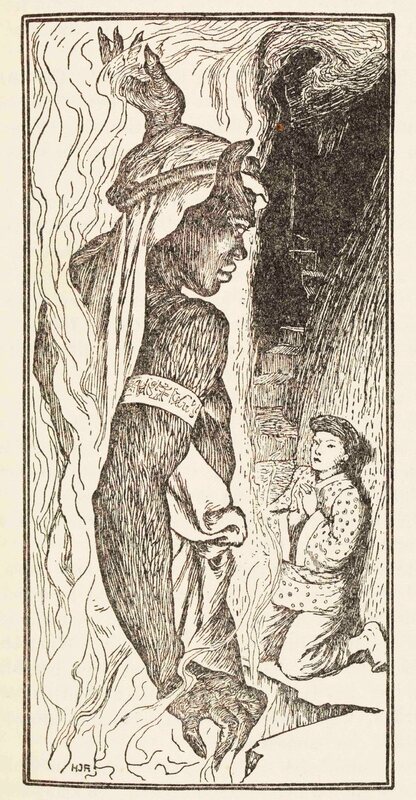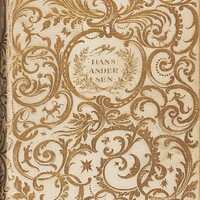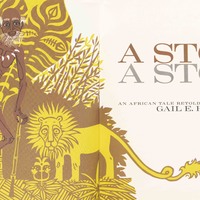Exhibit Contents
- Once Upon a Time
- The Arabian Nights Entertainments
The Arabian Nights Entertainments
One Thousand and One Nights or The Arabian Nights Entertainments is a collection of Middle Eastern folktales compiled in Arabic during the Islamic Golden Age. Popular stories associated with The Nights include “The Seven Voyages of Sinbad the Sailor,” “Ali Baba and the Forty Thieves,” and “Aladdin’s Wonderful Lamp,” shown here. The later two tales, however, were not part of the original Arabic manuscripts and were added by Antoine Galland with the first European version of the tales, Les mille et une units (1704-1717). The book featured is a compilation of Galland's stories in English translation edited by Andrew Lang, a Scottish folklore collector best known for his colored fairy books.
Lang made significant changes to these stories which were complex not only syntactically but also in terms of content. In an attempt to appeal to children, he excluded sexual references as well as anti-Semitic remarks which were plentiful in Galland's translation. However, Lang also omitted positive descriptions of Islamic cultures and important details, such as the original setting of "Aladdin" in China. Therefore, these stories should not be seen as authentically Middle Eastern, but rather as European social and cultural commentary.
"Aladdin's Wonderful Lamp"
Even the simplified, children-oriented translation of "Aladdin" in Lang's work is much more involved than the animated Disney adaptation as the folktale involves two genies, two sorcerers, and a magic ring in addition to a magic lamp. Though the many adaptations of the tale vary in their content, at its essence, "Aladdin" is a classic rags-to-riches story, the underlying theme of which is the lower class challenging a corrupt government.
There are many similar stories in other cultures that center around an impoverished boy or soldier who finds a magical item that grants his wishes. The magical item, often a ring, lamp, or box, is often stolen and subsequently recovered through the use of another magical object. Two examples from Western culture are the German fairy tale "The Blue Light" and the literary fairy tale “The Tinderbox” written by Hans Christian Andersen.



